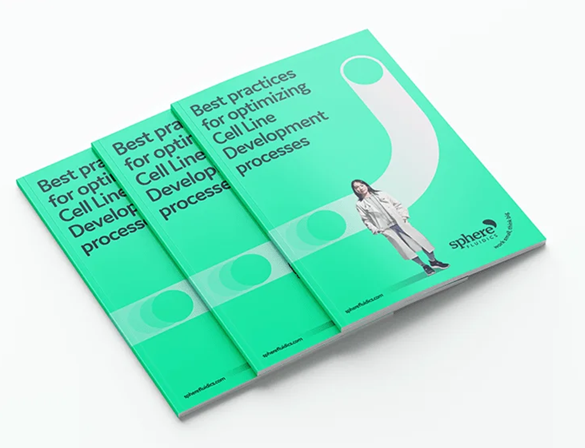Cell line development (CLD) is a vital component of biopharmaceutical development, focused on generating stable and high-quality cell lines for the production of therapeutic proteins. This process includes crucial steps such as selecting the host cell line, engineering the vector, performing transfection, cloning, expanding the cells, and conducting thorough screening to ensure optimal viability, growth rate, and product quality.

Image Credit: Fluidic Sciences and Sphere Bio
In this article, Fluidic Sciences and Sphere Bio spoke with Dr. Jon Dempsey, Founding Partner of Pathway Biopharma, regarding best practices for optimizing CLD processes.
Download the full article now to explore these strategies further.
Key steps in cell line development
- Host Cell Line Selection: The first critical step is selecting the appropriate host cell line. This decision is based on factors such as growth characteristics, genetic stability, and productivity, all of which are essential for ensuring optimal performance during the production process.
- Engineering of the Expression Vector: Crafting the expression vector is crucial for achieving high-level protein expression. This involves selecting robust promoters, enhancers, and other regulatory elements to maximize the efficiency and effectiveness of the expression system.
- Transfection: The engineered vector is introduced into the host cells through various transfection methods, each offering unique advantages and potential challenges. Selecting the appropriate method is key to successful gene incorporation.
- Cloning and Cell Expansion: Establishing monoclonal cell lines requires single-cell cloning followed by cell expansion. Advanced techniques, such as automated cell sorting, can significantly enhance the precision and efficiency of this process.
- Screening and Selection: Rigorous screening is conducted to identify high-producing clones. This step evaluates parameters including cell viability, growth rate, protein expression levels, stability, and overall product quality, ensuring that only the best-performing clones are selected for further development.
Best practices for optimizing CLD
Optimize workflow strategies:
- Implement automated systems for cell sorting and screening to enhance both efficiency and accuracy.
- Utilize high-throughput screening methods to quickly and effectively identify high-producing clones.
- Apply advanced genetic engineering techniques to refine vector design and improve transfection efficiency.
Innovations in cell line development:
- Explore novel expression systems and host cell lines to boost productivity and optimize performance.
- Integrate process analytical technologies (PAT) to enable real-time monitoring and control of cell line development processes.
- Adopt single-cell analysis tools to gain detailed insights into cellular behavior and enhance clone selection.
Challenges and solutions:
- Address some of the most common challenges by adopting robust screening protocols. These challenges may include genetic instability and variability in protein expression.
- Use stringent quality control measures to help mitigate risks associated with contamination and cross-contamination.
Conclusion
Cell line development is a dynamic and rapidly advancing field, with ongoing improvements focused on enhancing efficiency, productivity, and product quality. By embracing best practices and utilizing cutting-edge technologies, companies can refine their CLD processes and achieve exceptional results in biopharmaceutical production.
Download the full article now for a detailed discussion on optimizing cell line development processes.
Download the full article now to read more.

Image Credit: Fluidic Sciences and Sphere Bio
About Fluidic Sciences and Sphere Bio
Fluidic Sciences develops transformative in‑solution technologies for protein interaction analysis. Its flagship Fluidity One‑M instrument leverages Microfluidic Diffusional Sizing (MDS) to measure binding affinity, stoichiometry, size, and concentration without immobilization - directly in complex backgrounds such as serum, plasma, and lysate.
Sphere Bio is a brand of Fluidic Sciences. Its technology develops and manufactures single‑cell analysis and monoclonality assurance systems that enable researchers to find, analyze, and isolate the most valuable cells with speed and precision. Its proprietary picodroplet microfluidics and Cyto‑Mine® Chroma multiplexing platform power applications across antibody discovery, cell line development, cell engineering, and cell therapy.
Sponsored Content Policy: News-Medical.net publishes articles and related content that may be derived from sources where we have existing commercial relationships, provided such content adds value to the core editorial ethos of News-Medical.Net which is to educate and inform site visitors interested in medical research, science, medical devices and treatments.